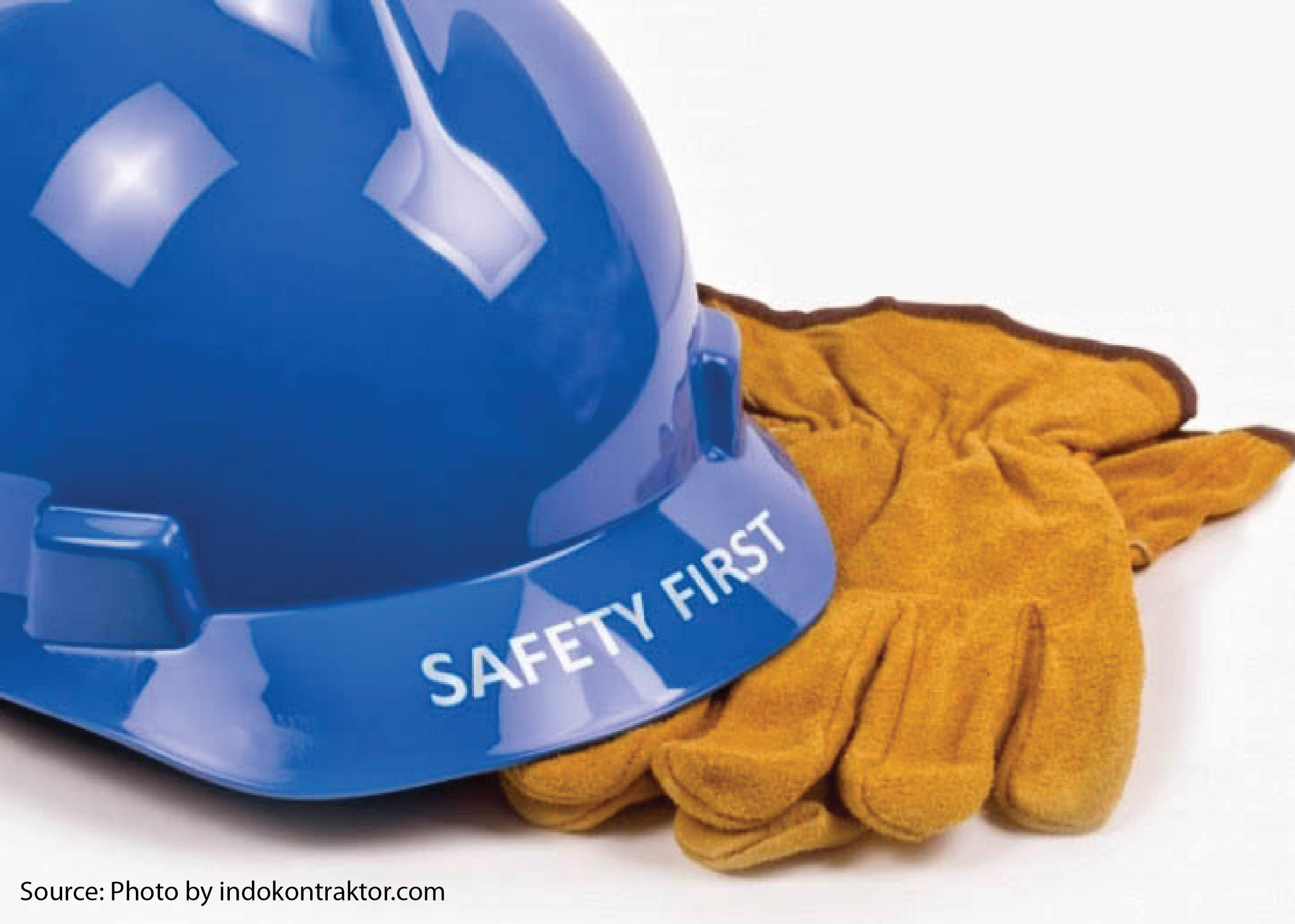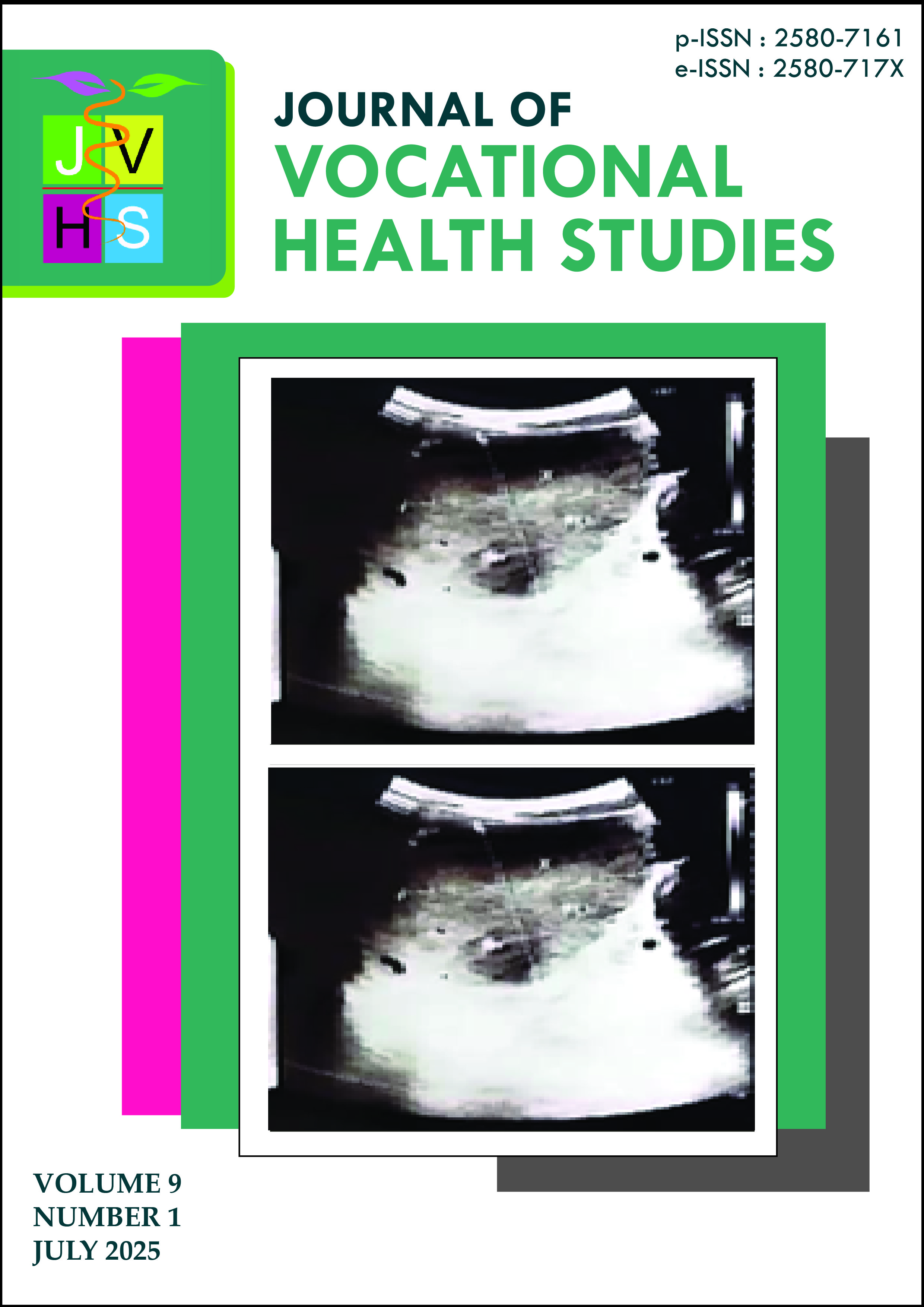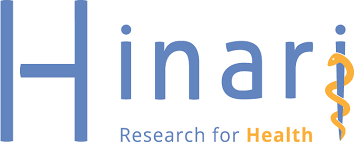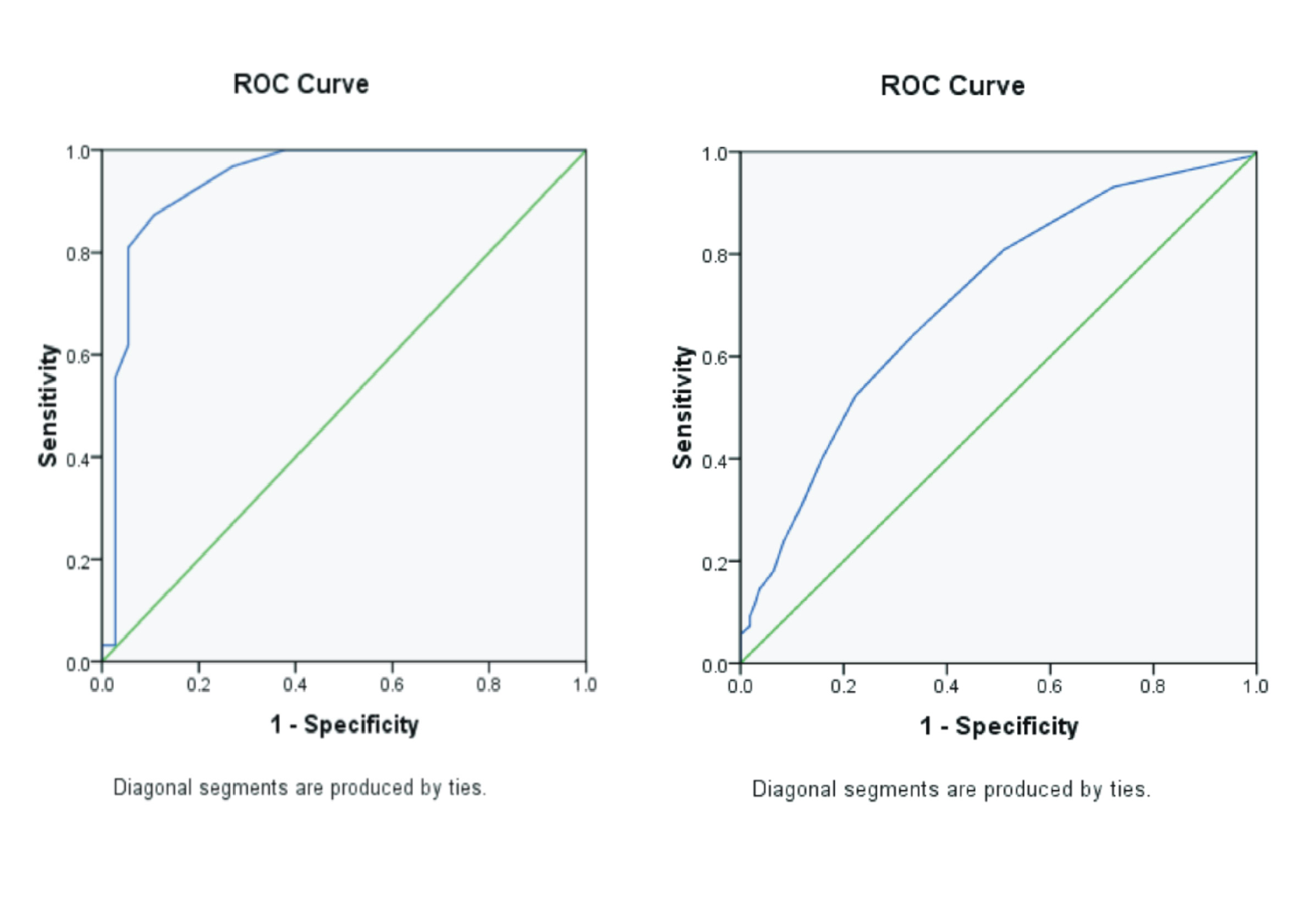APPLICATION OF THE BEHAVIORALLY ANCHORED RATING SCALE (BARS) IN ASSESSING EMPLOYEES’ OCCUPATIONAL SAFETY AND HEALTH SITUATIONAL AWARENESS

Downloads
Background: In 2017, at PT. XY, the average Frequency Rate (FR) was 4.68 accidents for every one million working hours, while the average severity rate (SR) was 336.16 lost workdays per one million work hours. These indicators reveal that 264 accidents and 18.983 working days lost during 56.469.736 working hours throughout the current year. Purpose: This research aims to determine the level of alertness among workers and investigate their behavior in carrying out tasks at the PT. XY factory. Method: Worker data were collected using sampling techniques and analyzed employing the Behaviorally Anchored Rating Scale (BARS) method to provide potential dangers and worker behavior in the PT. XY factory section. The research approach applied was quantitative, collecting data through the distribution of 44 questionnaires to workers in that section. Result: The potential hazards occurring in the PT. XY factory were attributed to workers’ lack of attention to Situational Awareness (SA) while doing work, where in the PT. XY factory section there are three processes, namely first press, second press, and filtration stage. The results of the confidence levels in the office section of the PT. XY factory showed actual accuracy and perceived accuracy values of 46.67% and 86.67%, respectively. In the process section, workers exhibited actual accuracy and perceived accuracy values of 42.85% and 84.28%, while in the maintenance section, the actual accuracy value was 44.81% and the perceived accuracy was 84.90%. Conclusion: Based on data analysis, office workers showed the highest level of alertness (65.00%), followed by maintenance workers (63.67%), while workers in the process section showed the lowest alertness level (63.00%).
Evita, S.N., Zusnita Muizu, W.O., Wahyu Atmojo, R.T., 2017. Penilaian Kinerja Karyawan dengan Menggunakan Metode Behaviorally Anchor Rating Scale dan Management by Objectives (Studi Kasus pada PT Qwords Company International). PEKBIS Vol. 9(1), Pp. 18-32.
Fang, Y., Cho, Y.K., Durso, F., Seo, J., 2018. Assessment of Operator’s Situation Awareness for Smart Operation of Mobile Cranes. Automation in Construction Vol. 85, Pp. 65-75.
Febriyanti, B.M., Faslah, R., 2013. Hubungan antara Beban Kerja dengan Kinerja pada Karyawan Balai Permasyarakatan Kelas I Jakarta Selatan (Bapas) di Jakarta Timur. Jurnal Pendidikan Ekonomi dan Bisnis (JPEB) Vol. 1(2), Pp. 104-116.
Hamdani, M.Z., Rudyarti, E., Phuspa, S.M., 2018. The Correlation of Personal Protective Equipment Socialization Toward the Changing of Occupational Safety and Health Behavior of Musical Instrument Craftsmen. Journal of Vocational Health Studies Vol. 2(1), Pp. 14-19.
Hasanuddin, D, 2018. Accurate Formula for Reducing Work Accident Rates. ISafety Magazine.
International Labour Organization (ILO) (2023). Safety and Health at Work: ILO Global Report 2023. Geneva: ILO.
Ivascu, L., Sarfraz, M., Mohsin, M., Naseem, S., Ozturk, I., 2021. The Causes of Occupational Accidents and Injuries in Romanian Firms: An Application of the Johansen Cointegration and Granger Causality Test. International Journal of Environmental Research and Public Health Vol. 18(14), Pp. 7634.
Khair, H., R.Sabrina, Batubara, R.W., 2021. Effect of Occupational Safety, Health (K3) and Leadership Style on Employee Work Productivity Mediated by Discipline in Operations PTPN IV Balimbingan. Legal Brief Vol. 11(1), Pp. 1450-1459.
Klieger, D., Kell, H., Rikoon, S., Burkander, K., Bochenek, J., Shore, J., 2018. Development of the Behaviorally Anchored Rating Scales for The Skills Demonstration and Progression Guide: Development of BARS for The Skills Demonstration and Progression Guide. ETS Research Report Series Vol. 1.
Kustiadi, O., 2018. Perancangan Penilaian Kinerja dengan Metode Behaviorally Anchor Rating Scale di PT. Zeno Alumi Indonesia. Jurnal Inkofar Vol. 1(1), Pp. 279606.
Laurila-Pant, M., Pihlajamäki, M., Lanki, A., Lehikoinen, A., 2023. A Protocol for Analysing The Role of Shared Situational Awareness and Decision-Making in Cooperative Disaster Simulations. International Journal of Disaster Risk Reduction Vol. 86, Pp. 103544.
Lusiana, Uray. 2012. Application of Calibration Curve, Accuracy and Precision Control Chart as Internal Quality Control in COD Testing in Wastewater. Biopropal Industri Vol. 3(1), Pp. 1-8.
Machfudiyanto, R.A., Latief, Y., Robert, 2019. Critical Success Factors to Improve Safety Culture on Construction Project in Indonesia. IOP Conf. Ser.: Earth Environ. Sci. Vol. 258(1), Pp. 012016.
Munir, A., Aved, A., Blasch, E., 2022. Situational Awareness: Techniques, Challenges, and Prospects. AI Vol. 3(1), Pp. 55-77.
Pangkey, S.J.I., Lengkong, V.P.K., Saerang, R.T., 2023. Analisis Penerapan Kesehatan dan Keselamatan Kerja (K3) sebagai Upaya Pencegahan Kecelakaan Kerja di PT. PLN (Persero) UP3 Manado. Jurnal EMBA : Jurnal Riset Ekonomi, Manajemen, Bisnis dan Akuntansi Vol. 11(4), Pp, 200-211.
Panjaitan, N., 2017. Bahaya Kerja Pengolahan RSS (Ribbed Smoke Sheet) menggunakan Metode Hazard Identification dan Risk Assessment di PT. PQR. Jurnal Sistem Teknik Industri Vol. 19(2), Pp. 50-57.
Paskarini, I., Rahman, F.S., Dwiyanti, E., Mulyono, 2019. Occupational Accident in Industry: The Causes, Type and Impact on Workers in Sidoarjo, Indonesia. International Journal of Modern Trends in Engineering and Research (IJMTER) Vol. 6(2), Pp. 9-12.
Prasetya, T.A.E., Mukhadiroh, L., Fitrahanjani, C., 2022. Contributing Factors in Informal Worker Performance: A Cross-Sectional Study in An Agro-Fish Market in Lamongan, East Java, Indonesia. Nusantara Science and Technology Proceedings Pp. 41-49.
Prawito, A., Yuniar, Desrianty, A. 2014. Measurement of The Level of Alertness of Young Car Drivers in The City of Bandung using Quantitative Analysis of Situational Awareness (QUASA). Integra Design, Vol. 1(4), Pp. 169-179
Rauf, N., Padhil, A., Yulyanda, A., 2003. Analysis of The Influence of Price and Product Performance, on The Decision of Heavy Equipment Customer Buying Excavator Products ABC PT. XYZ. Journal of Optimization in Industrial Engineering Vol. 16(1), Pp. 141-145.
Rosento, R., Yulistria, R., Handayani, E., Nursanty, S., 2021. Pengaruh Keselamatan dan Kesehatan Kerja (K3) Terhadap Produktivitas Kerja Karyawan. Swabumi Vol, 9(2), Pp. 147-158.
Saleh, L., Russeng, S., Tajuddin, I., Hardi Yanti, I., Syafitri, N., Yusbud, M., Rahmadani, Y., 2022. The Development of a Work Stress Model for Air Traffic Controllers in Indonesia. Kesmas Jurnal Kesehatan Masyarakat Nasional Vol. 17(1), Pp. 40-47.
Saputra, F., Mahaputra, M.R., 2022. Building Occupational Safety and Health (K3): Analysis of the Work Environment and Work Discipline. Journal of Law, Politic and Humanities Vol. 2(3), Pp. 105-114.
Sepang, B.A.W., Tjakra, J., Langi, J.E.C., Walangitan, D.R., 2013. Manajemen Risiko Keselamatan dan Kesehatan Kerja (K3) pada Proyek Pembangunan Ruko Orlens Fashion Manado. Jurnal Sipil Statik Vol. 1(4), Pp. 282-288.
Suminar, A.C., Mukzam, M.D., Ruhana, I., 2015. Pengaruh Gaya Kepemimpinan dan Lingkungan Kerja terhadap Kinerja. Jurnal Administrasi Bisnis (JAB) Vol. 26(2), Pp. 1-10.
Susilo, R., Kasmir, K., 2022. The Effect of Job Training, Work Motivation, Occupational Health and Safety (K3) on Employee Performance at Cibitung Medika Hospital. Journal of Social Research Vol. 2(1), Pp. 234-243.
Tambunan, H.N., Nazaruddin, Sadalia, I., 2021. Analysis of Knowledge, Implementation and Monitoring of K3 on Occupational Health and Safety Management System (SMK3) at Pt. Mujur Lestari Labuhan Batu Selatan. International Journal of Research and Review Vol. 8(12), Pp. 404-410.
Taufik, T., Fithri, P., Prathama, Y., 2016. Perancangan Aplikasi Sistem Penilaian Kinerja Karyawan dengan Metode MBO dan BARS (Studi Kasus PLTA Maninjau). Jurnal Optimasi Sistem Industri Vol. 13(2), Pp. 760.
Trapsilawati, F., Herliansyah, M.K., Nugraheni, A.S.A.N.S., Fatikasari, M.P., Tissamodie, G., 2020. EEG-Based Analysis of Air Traffic Conflict: Investigating Controllers’ Situation Awareness, Stress Level and Brain Activity during Conflict Resolution. The Journal of Navigation Vol. 73(3), Pp. 678-696.
Waruwu, S., Yuamita, F., 2016. Analisis Faktor Kesehatan dan Keselamatan Kerja (K3) yang Signifikan Mempengaruhi Kecelakaan Kerja pada Proyek Pembangunan Apartement Student Castle. Spektrum Industri Vol. 14(1), Pp. 63-78.
Copyright (c) 2025 Journal of Vocational Health Studies

This work is licensed under a Creative Commons Attribution-NonCommercial-ShareAlike 4.0 International License.
- The authors agree to transfer the transfer copyright of the article to the Journal of Vocational Health Studies (JVHS) effective if and when the paper is accepted for publication.
- Legal formal aspect of journal publication accessibility refers to Creative Commons Attribution-NonCommercial-ShareAlike (CC BY-NC-SA), implies that publication can be used for non-commercial purposes in its original form.
- Every publications (printed/electronic) are open access for educational purposes, research, and library. Other that the aims mentioned above, editorial board is not responsible for copyright violation.
Journal of Vocational Health Studies is licensed under a Creative Commons Attribution-NonCommercial-ShareAlike 4.0 International License















































